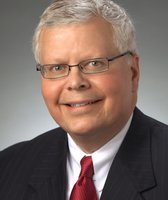Stand up for the facts!
Our only agenda is to publish the truth so you can be an informed participant in democracy.
We need your help.
I would like to contribute
Hillary Clinton might have become America’s first woman president, but she didn’t, and her book What Happened is her explanation of why.
Clinton writes about details as minor as eating pork chop on a stick at the Iowa State Fair (and liking it) and as damaging as her statement during a CNN town hall that "we're going to put a lot of coal miners and coal companies out of business," (which she called "garbled" and "the exact opposite" of her plan to foster jobs in coal country).
The book is part personal memoir, part political science treatise, part self-defense of a failed campaign and part strategy session for Democratic politicians to come.
We’ll leave it to the pundits to assess whether she lived up to the promise in her introduction that she is "letting down my guard." For us at PolitiFact, Clinton’s book is a trove of checkable claims. She is a self-confessed wonk, and her references to research and statistics range from the mundane to the deepest undercurrents that shape our politics.
Our fact-checker’s guide to her book follows that eclectic mix.
Sign up for PolitiFact texts
Okay, first we did what anyone did and searched for our name. We found it!
The mention of PolitiFact comes in reference to a March 2016 column by former New York Times editor Jill Abramson, who said Clinton was "fundamentally honest."
The truth is Clinton is right depending on how you calculate truth.
We fact-checked Clinton 196 times from the moment she announced her candidacy in the spring of 2015 through Election Day 2016.
Of those 196 fact-checks, 100 rated True or Mostly True. That means 51 percent of Clinton claims we fact-checked were basically accurate.
Of candidates we fact-checked at least 50 times, only one did better: Sen. Bernie Sanders. Nearly 52 percent of the claims we checked from Sanders rated True or Mostly True.
Clinton, however, does better if you only count True statements that we rated. There, it’s Clinton 19 percent, Sanders 11 percent, Sen. Marco Rubio 10 percent, and Sen. Ted Cruz 9 percent.
Last point, and it’s a big one: We don’t check every statement a politician makes. So any comparison is problematic.
Clinton is correct, but her comparison to Barack Obama’s numbers in 2012 obscures a more sobering comparison. Yes, exit polls show that 42 percent of white women picked Obama in 2012. But Clinton’s 43 percent is less than other Democrats in recent memory.
Here’s the list for past Democrats:
Obama 2008 -- 46 percent
Kerry 2004 -- 45 percent
Clinton 1996 -- 48 percent
While Clinton’s statement is technically accurate, there’s a bit of cherry-picking going on.
Clinton struggled to connect with working-class voters and she opened a chapter on the subject with her quote about coal mining jobs. She said the fallout from that remark buried her broader message of what needed to be done, and this chapter became her chance to have the last word.
But as she laid out how and where she would have targeted investment, she cautioned that people need to keep their expectations in check.
"In some places, the old jobs aren’t coming back, and the infrastructure and workforce needed to support big new industries aren’t there," she wrote. "As hard as it is, people may have to leave their hometowns and look for work elsewhere in America."
As a sign of how tough the challenge is, she noted, "fewer Americans are moving than ever before."
That’s accurate.
The U.S. Census Bureau said in November, "The percentage of Americans moving over a one-year period fell to an all time low in the United States to 11.2 percent in 2016." A further study by the Pew Research Center found that millennials, people between the ages of 25 and 35, play a large role in that trend. In 1963 and 2000, 26 percent of people that age had moved in the past year. In 2016, just 20 percent said they had.
Clinton’s got the mark-up right. Donald Trump bought the Maison de l’Amitié in Palm Beach, Fla., at a bankruptcy auction in 2004 for $41.3 million. He sold it just before the market crash in 2008 for $95 million to Dmitry Rybolovlev, a Russian billionaire who made his money in the fertilizer business.
At the time Trump said, "This is the highest price ever paid for a house."
Clinton presented this nugget as an indication of Trump’s cozy ties with Russia. The New York Times offered the theory that Rybolovlev was aiming to tie up money as he went through a contentious divorce.
Two researchers reached this conclusion by compiling publicly reported estimates and crowdsourced information submitted from around the country. They said the many marches around the country on Jan. 21, 2017, brought about 4.1 million people to the streets in the United States.
That appears to be a record, but we’re dealing with imprecise estimates.
The closest competitors were the Vietnam War Moratorium marches in 1969 and 1970 which involved about a million people in the United States. A similar number came out to protest the Iraq War in 2003. Earth Day in 1970 posted large numbers, but most of that, the researchers said, included workshops and science fairs.
Another review of large American protests included the 1997 Million Woman March, the 1982 anti-nuclear weapons march in New York City and the 1993 March on Washington for Lesbian, Gay, and Bi Equal Rights and Liberation. While some estimated the numbers at or above 1 million people, they all would be less than the American turnout for the Women’s March.
This tracks back to someone who wrote a book called Hot Sauce Nation, so, dare we say, take it with a grain of salt. But in any case, chilies contain folic acid, and Vitamins A, E and C, all of which have been associated with a stronger immune system. We don’t think the link to hot sauce per se has been peer reviewed.
Call it the Democratic curse. Martin Van Buren, a founder of the Democratic Party, became the eighth president, succeeding Andrew Jackson. Some might quibble that at the time, party names were somewhat in flux and the term Democratic Republicans could still be heard, but Van Buren was a Democrat.
Clinton’s point here was that women politicians are covered differently than men, and crying is one of the markers. When politicians such as Ronald Reagan or Barack Obama welled up, Clinton said they were treated with compassion.
"But when a woman cries, it can be viewed far less charitably," she wrote.
We tried the Schroeder test. Clinton’s right.
For comparison, the most famous crier in a presidential race was perhaps Ed Muskie in 1972. Here’s his showing on Google:
This isn’t high-end social science, but Clinton got Schroeder’s Google results right.
Looking back over the years, Clinton said "the American middle class really had gotten screwed," but she lashed Trump for "rubbing salt in their wounds."
"He was wrong about so much," she wrote. "There had been 75 straight months of job growth under President Obama and incomes for the bottom 80 percent were finally starting to go up."
Government numbers back her up.
As we’ve reported before, the Bureau of Labor Statistics shows 75 consecutive months of job growth under Obama. The U.S Census Bureau said that in 2015, real median household income rose 5.2 percent. Looking at quintiles (the income groups broken down into five equal number of households), all except the top quintile rose, if only modestly between 2014 and 2015.
The only catch is that when the bureau factored in household size, there was a 0.1 percent drop for the fourth quintile. That dilutes Clinton’s claim by a hair, but strictly in terms of incomes, she was correct.
Our Sources
Census Bureau, Income and Poverty in the United States: 2015, September 2016
Bureau of Labor Statistics, Employment, Hours, and Earnings from the Current Employment Statistics survey, September 2017
Washington Post, This is what we learned by counting the women’s marches, Feb. 7, 2017
Business Insider, The 9 biggest marches and protests in American history, Jan. 20, 2017
United States Senate, Vice Presidents of the United States (President of the Senate), 1997
CNN, By the Numbers: Vice Presidents, July 5, 2012
Fortune, Why Hillary Clinton Carries Hot Sauce With Her, April 18, 2016
Washington Post, Election 2016: Money Raised as of Dec. 31, Feb. 1, 2017
Bloomberg, Tracking the 2016 Presidential Money Race, Dec. 9, 2016
The Atlantic, Hillary Clinton’s Women Donors Could Change Politics Forever, Jan. 30, 2016
FEC, 2013-2014, 2015-2016 2,619,000 of donations were <$100
CNN, Exit Polls, Nov. 23, 2017
CNN, President: Full Results, Dec. 10, 2013
CNN, Exit Polls, Nov. 18, 2008
CNN, Exit Poll, 2005
Political Science Quarterly, The 2000 Presidential Election: Why Gore Lost, Summer 2001
RealClearPolitics, What White Women Want, Surprisingly the GOP, Nov. 13, 2009
Colorlines, White Power in Election 2000, Mar. 15 2001
CNN, Exit Poll, Nov. 6, 1996
Media Matters, Study Confirms Network Evening Newscasts Have Abandoned Policy Coverage for 2016 Campaign, October 26, 2016
Tyndall Report, Oct. 24, 2016
Salon, The media isn’t for Hillary Clinton: Her emails have been covered more than all policy proposals, Nov. 3, 2016
The Inquirer, That Hillary 'bombshell' was just the implosion of U.S. democracy, Nov. 1 2016
Census Bureau, Americans Moving at Historically Low Rates, Census Bureau Reports, Nov. 16, 2016
Pew Research Center, Americans are moving at historically low rates, in part because Millennials are staying put, Feb. 13, 2017
Guardian, This may shock you: Hillary Clinton is fundamentally honest, March 28, 2016
Washington Post, This Palm-Beach Post story is peak Russia-Trump media frenzy, March 10, 2017
New York Times, Only in Palm Beach: The $95 Million Tear-Down, Aug. 27, 2016
CNN, Home prices post record 18% drop, Dec. 30, 2008
Wall Street Journal, Russian Billionaire Part of Record Deal for Trump Mansion, June 20, 2008
NCBI, Vitamin effects on the immune system: vitamins A and D take centre stage, July 20, 2010
PolitiFact, In context: Hillary Clinton’s comments about coal jobs, May 10, 2016
PolitiFact, Fact-checking Donald Trump’s address to Congress, Feb. 28, 2017


 PolitiFact Rating:
PolitiFact Rating: 
 PolitiFact Rating:
PolitiFact Rating:  PolitiFact Rating:
PolitiFact Rating: 


















































